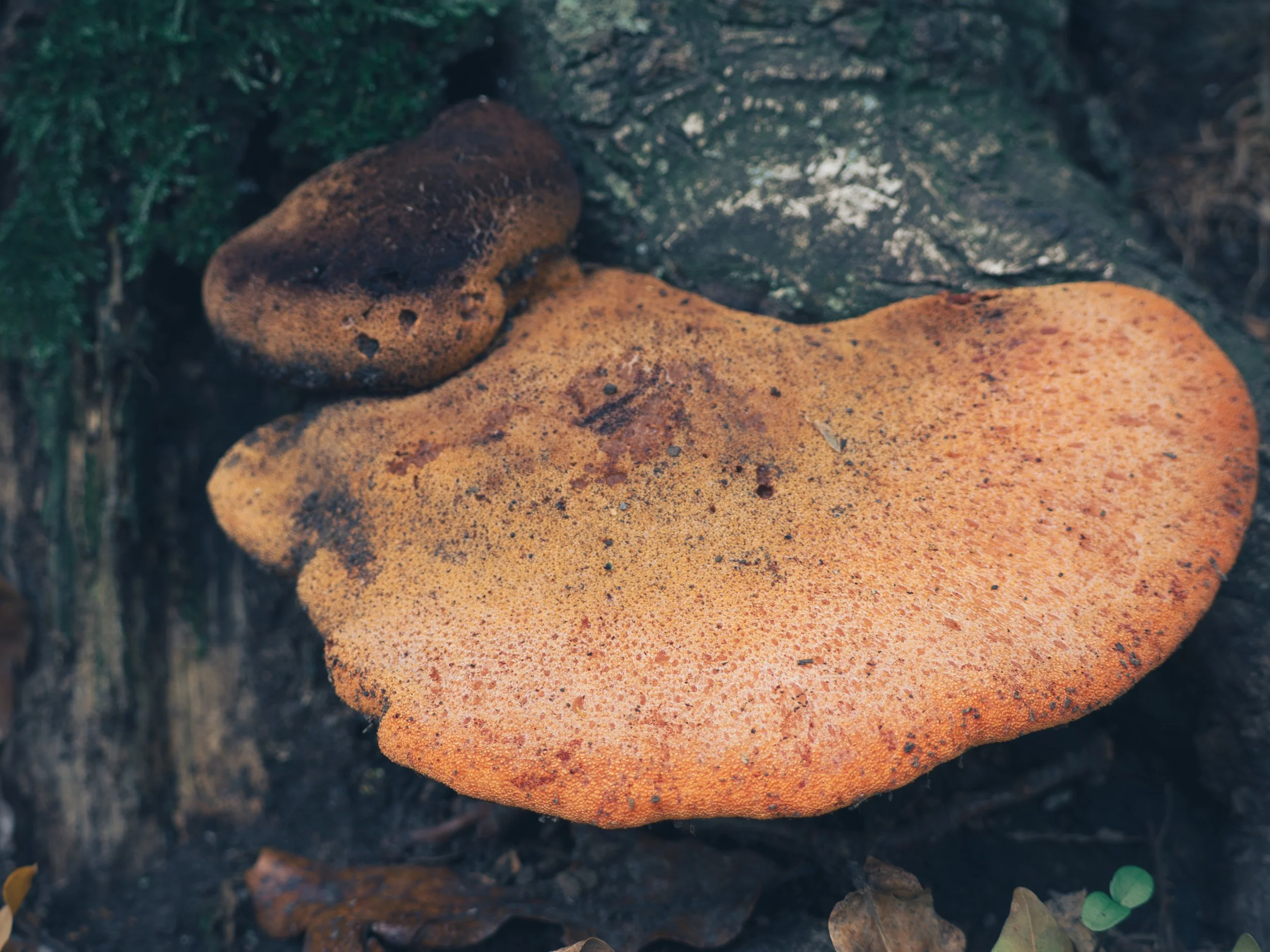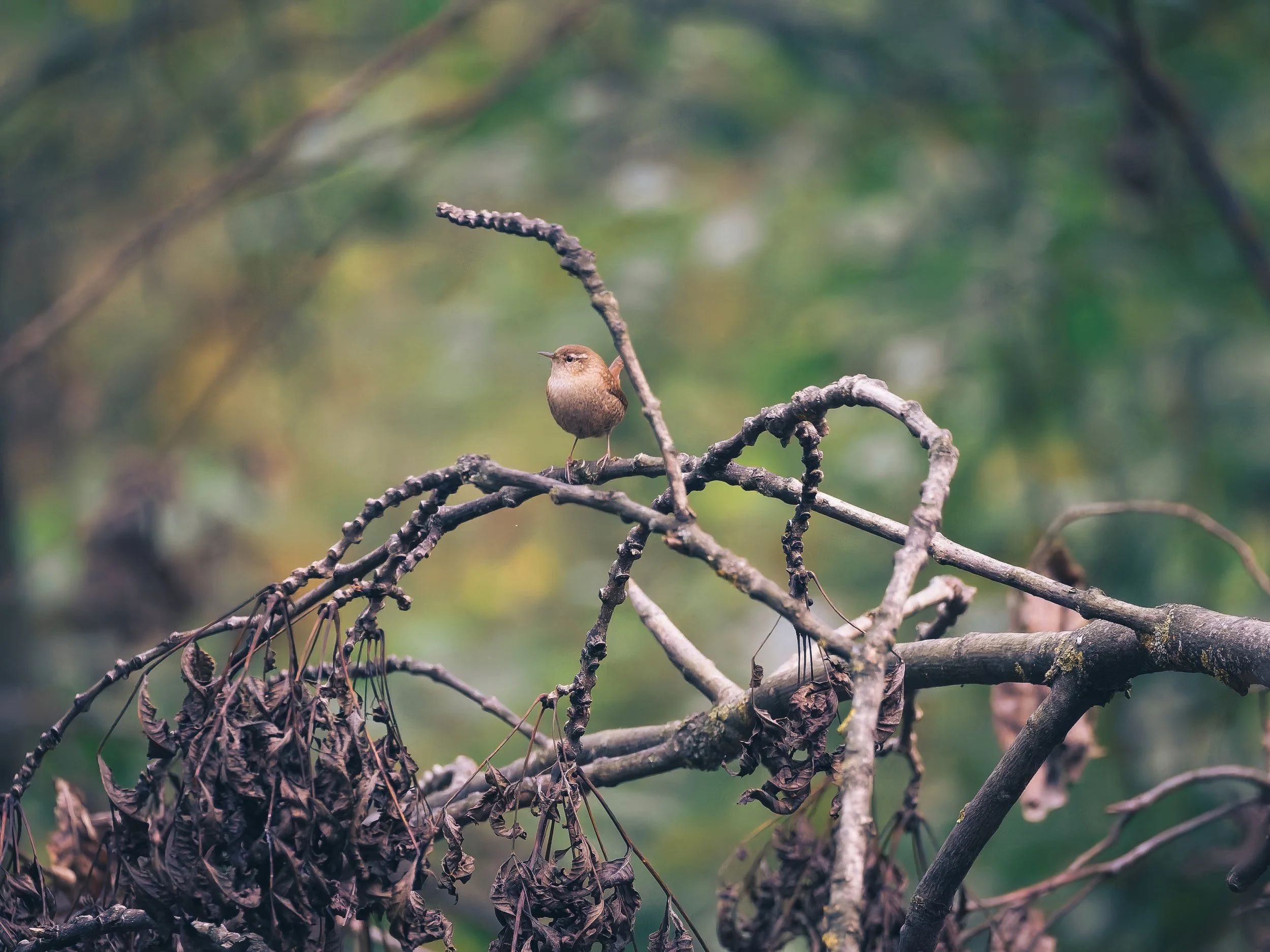The Wildlife Photography Lesson I Keep Learning (And the 100-400mm Lens That Captured It)
I spent two days in my local autumn forest testing the Olympus 100-400mm Mark II lens, and what started as a gear review turned into one of those humbling reminders that nature photography throws at you over and over again.
Day one was rough. Forty minutes of walking through beautiful autumn colors, hearing birds everywhere, but seeing almost nothing through my viewfinder. The overcast sky ate the light early, and I headed home with basically no shots worth posting.
But at least there were a few I enjoy looking at, and maybe discuss with friends & family. Like the one below.
Photo of a mushroom
OM SYSTEM OM-1 + 100-400mm MK II
This is the part of wildlife photography that doesn't make Instagram: the walks where you carry heavy gear through wet forests and come back empty-handed. But here's the thing: I went back the next day.
Day two started similarly. More walking, more hearing-but-not-seeing. The forest was alive with birdsong—blackbirds, great tits, even a woodpecker in the distance—but they stayed hidden in the dense autumn foliage.
Then I did something different. I stopped chasing.
I found a log near some open branches with good light, sat down, and just... waited. Fifteen minutes passed. Then thirty. I used my camera as binoculars, scanning the treeline, and eventually—movement.
Wren
OM SYSTEM OM-1 + 100-400mm MK II
A tiny wren appeared, hopping between branches. Then a robin with its brilliant orange breast. A nuthatch working its way down a tree trunk. Over forty-five minutes, the forest came alive around me because I stopped trying to force it.
Robin
OM SYSTEM OM-1 + 100-400mm MK II
Testing the 100-400mm Mark II was the perfect excuse to spend time in this forest, and I'm genuinely impressed with this setup paired with my OM-1.
What I love:
Incredibly lightweight for a telephoto—I could carry this all day
Sharp images with excellent feather detail, even on small, distant birds
In-body stabilization combined with lens stabilization works beautifully
Versatile 100-400mm range handles both close forest work and distant subjects
The trade-off:
Autofocus is slower than the 150-600mm, noticeable with fast-moving subjects
For a compact travel setup or local forest walks where weight matters, this lens delivers. At 400mm equivalent (800mm with Micro Four Thirds crop), the reach is more than enough for bird photography in close quarters.
And, even in darker forests where there is not enough lights, the OM SYSTEM OM-1 + 100-400mm MK II performs really well. Especially when you pair it in post with DxO Pure Raw to denoise. It’s my go-to tool and part of my workflow for high-ISO images. If you want to give DxO a try, you can use discount code Alexandru15 for 15% off on https://shop.dxo.com/
Here's what I keep relearning: wildlife photography isn't about chasing moments—it's about creating space for them to happen.
When you walk through nature with an agenda, trying to force encounters, everything hides. But when you slow down, sit quietly, and let yourself just be in the environment, that's when the magic happens.
The robin appears. The wren gets curious. The nuthatch comes closer.
This applies beyond photography. The more we try to control outcomes, the more they slip away. The more we relax and stay present, the more life delivers.
So if you're feeling frustrated with your wildlife photography results, try this: pick one spot with good light, sit down, and give it forty-five minutes. Don't move. Don't chase. Just observe.
Nature rewards patience more than gear, and I captured some of my favorite autumn forest shots by simply stopping long enough to let the forest forget I was there.






